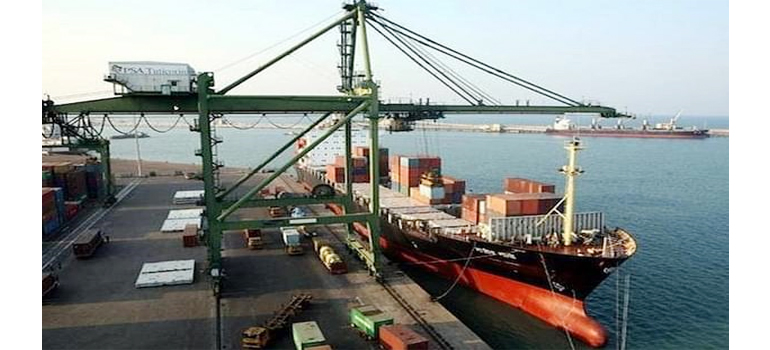
MADRAS: V O Chidambaranar Port Authority, the State-owned entity that runs the port at Thoothukudi in Tamil Nadu, has mandated the Indian Institute of Technology Madras (IIT Madras) to build two artificial intelligence/machine learning-based functionalities – prediction and anomaly detection – to enhance ease of doing business and operational efficiency through data science and related technologies at the port.
This is the first-of-its-kind initiative taken by a port in India, emphasising the importance technology will play in boosting productivity and efficiency.
The proposed functionalities will be applied to two phases of the port’s operations – in the sea and on land – captured through the metrics of vessel turnaround time (VTT) and dwell time (DT). Both modules will use a wide range of input features, such as cargo type, volume, vessel parameters, berth parameters, cranes allocated, truck gate protocols, truck assignment, etc.
The turnaround time of a ship (VTT) refers to the time the vessel reports at the anchorage of a port to the time it sails out from the berth after unloading/loading cargo while cargo and container-related dwell time (DT) refers to the time cargo and containers stays in a terminal’s in-transit storage area while awaiting shipment by vessels in the case of exports or evacuation by rail or road for imports. The two broadly reflect the efficiency of a port.
At V O C Port, a container ship is turned around in 20 hours, on average. One of the major delays that occur during the entire journey of a ship is during its scheduling at a port. A ship might have to wait for the docks to be vacant to unload/load its cargo or it might wait for a tug and pilot to bring them in, which are referred to as pre-berthing delays.
Even after berthing, the availability of manpower, machinery and appropriate permissions/protocols for cargo handling play a critical role in minimizing VTT.
“A low VTT is, arguably, the most important attraction a port can offer to a shipping line,” according to a proposal submitted by the Robert Bosch Centre for Data Science and Artificial Intelligence (RBCDSAI) in IIT Madras.
The vessel turnaround time assumes added significance as ship operating costs accounts for a big component of the overall costs for a shipping company.
Similarly, a high dwell time contributes to delays in the importer receiving goods and longer lead times for exporters, which, in turn, locks up capital.
From a port’s perspective, a high dwell time locks up resources – manpower, machinery, storage, etc. This increases the cost of doing business, which translates into lower profitability if the cost is absorbed, or it makes the port a less attractive channel if the cost is passed on to the customers.
In Indian ports, the land-based distribution goes through multiple workflows. For instance, some cargo is processed through the yard and container freight station (CFS) prior to exiting the port, while some others are evacuated by direct port delivery (DPD) which helps move the container directly from the terminal to the cargo owner.
“This choice of channels and the segmentation of influences that inputs have based on the channels becomes important,” the proposal written by IIT Madras said.
Vessel turnaround time and dwell time depend on several factors such as type of cargo, type of weather, size of the ship, amount of cargo to be unloaded, pre-existing congestion, land distribution channel, customs implications, trucking gate protocol, etc.
VTT tends to be higher on holidays as compared to other working days except for Sundays. This could be due to the ports being short-staffed or having extra cargo being delivered on those specific days. These insights are achieved through proper exploratory data analysis of the historical data presented by the ports. This can help in identifying the key operational parameters that are influencing VTT and DT.
The use of the prediction engine and anomaly detection map to two different but complementary sets of port-level interventions. The prediction engine serves towards a systemic understanding of the factors contributing to VTT and DT, and the magnitude of their influence. A prediction engine helps by creating an expectation of the time taken at each stage. This can be used for capacity planning.
The anomaly detection allows for interventions on a case-by-case basis. There are a sequence of steps or operations, with concrete markers, that contribute towards VTT or DT. An expectation of the time taken at these stages can be made using a multivariate framework devised in the prediction engine.
“Overall, the use of these two AI/ML engines will serve towards actionable insights and prescriptive policies,” IIT Madras added in its proposal.
Original News Link
https://infra.economictimes.indiatimes.com/news/ports-shipping/v-o-c-port-mandates-iit-madras-to-build-ai-and-ml-based-functions-to-boost-efficiency-and-ease-of-doing-business/93747532